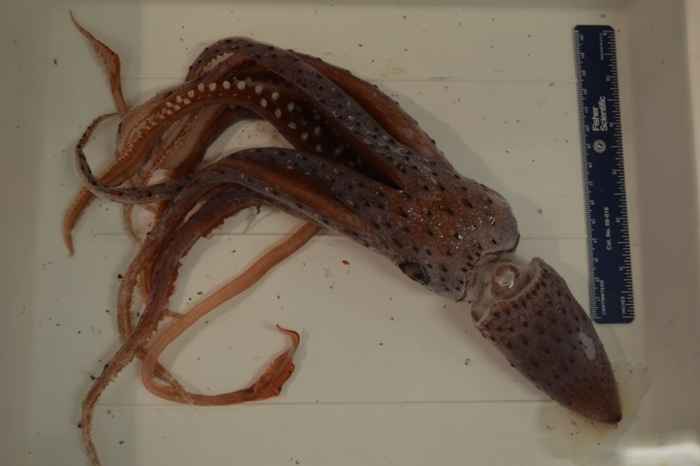Dolphins perform special spin dive when hunting deep prey
1 December 2021

Spin dives can be observed from the surface, and the team of researchers had seen Risso’s dolphins perform these dives in several hunting grounds. ‘Our expectation was that these dives were foraging dives, to hunt squids. But at first we did not understand the purpose and why Risso’s dolphins would spend so much sprinting energy at the start of a dive’, says Fleur Visser, leading researcher at the Institute for Biodiversity and Ecosystem Dynamics (UvA) and the NIOZ Royal Netherlands Institute for Sea Research. The team used data of more than 250 dives recorded on biologging devices, they temporarily attached to seven individual dolphins, using suction-cups. The biologger recorded dive depth, movement dynamics and sound. Then they compared it to the depth of the deep scattering layer, a dense aggregation of prey, including their preferred prey: squid.
To spin or not to spin
The sprint-and-spin at the start of the dive makes it possible for the Risso’s dolphins to reach a great depth in a shorter amount of time. This is essential, as dolphins are air-breathing predators and thus have a limited amount of time to spend at depth. The rapid descent enables them to reach deep prey much faster, and have time to find more prey once they reach their desired depth. Without the sprint, it is likely that deep dives would not be sufficiently profitable.
The deep scattering layer in which the dolphins forage migrates up and down through the water column during the day. During the day, the layer 'hides’ from predators in dark waters deeper than 300 meters. Around dawn, it migrates up to forage in the surface layers, to return to its refuge around dusk. Risso's dolphins have become specialized predators of the deep scattering layer, that traces the movement of this prey layer, foraging deep during the day, and shallow at night.

Dolphins need specialised dive strategies that can balance their oxygen requirements with obtaining sufficient prey at large depth. ‘We were amazed by the stark contrast between when a spin and non-spin foraging dive is used. It is like flicking a switch,’ says Visser. ‘And related to that, the really clear tracing of a prey layer, and having multiple strategies to hunt in it, depending on its depth. The Risso’s dolphins have adapted to be able to effectively hunt deep, next to shallow, circumventing the predator-avoidance strategy of their squid prey.’
Ecosystem understanding
To better understand and protect the oceans, researchers need to know more about fundamental life processes, such as the interactions between top predators and prey species. Top predators are crucial species that structure ecosystem health and biodiversity. A fundamental understanding of predator-prey dynamics in the deep sea requires combined data from hunting techniques and prey animals. But how to observe a hunt at 500 m depth?

Risso’s dolphins form an important link between deep ocean and near-surface waters and can prove to be important sentinels in our understanding of the vast, large unexplored deep sea. Which prey the dolphins are actually hunting in deeper and shallower water remains uncertain. Do they target the same prey, or do the different depths offer different opportunities for these generalist predators? A topic of further study.
Read the complete article via Royal Society Open Science
Risso’s dolphins perform spin dives to target deep-dwelling prey
Fleur Visser, Onno A. Keller, Machiel G. Oudejans, Douglas P. Nowacek, Annebelle C.M. Kok, Jef Huisman and Elisabeth H.M. Sterck